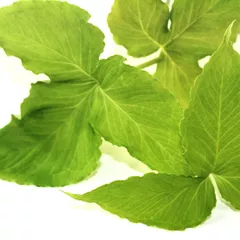Lesser Yang stage
The information provided here is not a replacement for a doctor. You shouldn't use it for the purpose of self-diagnosing or self-medicating but rather so you can have a more informed discussion with a professional TCM practitioner.
At a glance
Preliminary reading: What is a pattern? The concept of The six stages theory
Key attributes
Chinese name: 少阳 Pinyin name: Shǎo Yáng
Pattern nature: Full
Causes
Precursor patterns: Bright Yang Stomach Heat Bright Yang Fire in Stomach and Intestines
Common causes: External pathogenic factor
Diagnosis
Common symptoms: Dry throat No appetite Irritability Blurred vision Nausea or vomiting and four other symptoms
Pulse type(s): Wiry (Xian), Fine (Xi)
Tongue description: Unilateral thin white coating
Treatment
Treatment principle: Harmonize the Lesser Yang
Common formulas: Xiao Chai Hu Tang
Pathology
This is the pattern of the Lesser Yang stage, the third stage of the Six Stages theory.
At this stage the External Pathogen has penetrated to the level of the Gallbladder Channel.
Its main characteristic is that it's a stage that oscillates between the Bright Yang and Greater Yang stages and alternatively takes symptoms from both. Such oscillations are characteristic of diseases like malaria and typhoid fevers that show alternating heat and chills, and a cyclic recurrence of symptoms.
The chills, which can also be an aversion to cold, alternate with the fever, which can also be a mere feeling of heat. They aren't simultaneous.
Other symptoms are typical of the Gallbladder channel: bitter taste, dry throat, blurred vision, hypochondrial fullness and distension, irritability, nausea and vomiting.
Causes
Precursor patterns: Lesser Yang stage can derive from Bright Yang Stomach Heat Bright Yang Fire in Stomach and Intestines
External pathogenic factor: The main cause of this pattern is when an external pathogen, typically Wind-Cold, has invaded the body and had progressed in the Interior.
Diagnosing Lesser Yang stage
Diagnosing a pattern in Chinese Medicine is no easy feat and should be left to professional practitioners. In particular one has to know how to differentiate between different types of pulses and tongue coatings, shapes and colors as well as learn to read from a long list of seemingly unrelated symptoms.
Pulse type(s): Wiry (Xian) or fine (Xi)
Tongue description: Unilateral thin white coating
Main symptoms: Dry throat No appetite Irritability Blurred vision Nausea or vomiting Hypochondrium fullness Hypochondrial distention Bitter taste in the mouth Alternating fever and chills
Treating Lesser Yang stage
Treatment principle
Harmonize the Lesser Yang
Herbal formulas used to treat Lesser Yang stage



The top herbs in Xiao Chai Hu Tang are Bupleurum Roots (Chai Hu), Baikal Skullcap Roots (Huang Qin) and Crow-Dipper Rhizomes (Ban Xia)
Xiao Chai Hu Tang
Source date: 220 AD
Number of ingredients: 7 herbs
Key actions: Treats the Lesser Yang Channels (Gallbladder and Triple Warmer). Regulates the Liver and Spleen functions. Addresses combined Yin-Yang symptoms of External and Internal, Excess and Deficiency, and Hot and Cold.
Formula summary
Xiao Chai Hu Tang is a 7-ingredient Chinese Medicine formula. Invented in 220 AD, it belongs to the category of formulas that harmonize lesser Yang-warp disorders.
Besides Lesser Yang stage, Xiao Chai Hu Tang is also used to treat Phlegm-Fluids in the Stomach and Small intestine or Half Exterior Half Interior.
Consequence patterns
Bright Yang Fire in Stomach and Intestines
If left untreated Lesser Yang stage can lead to Bright Yang Fire in Stomach and Intestines
If left untreated Lesser Yang stage can lead to Bright Yang Stomach Heat
If left untreated Lesser Yang stage can lead to Greater Yin stage
